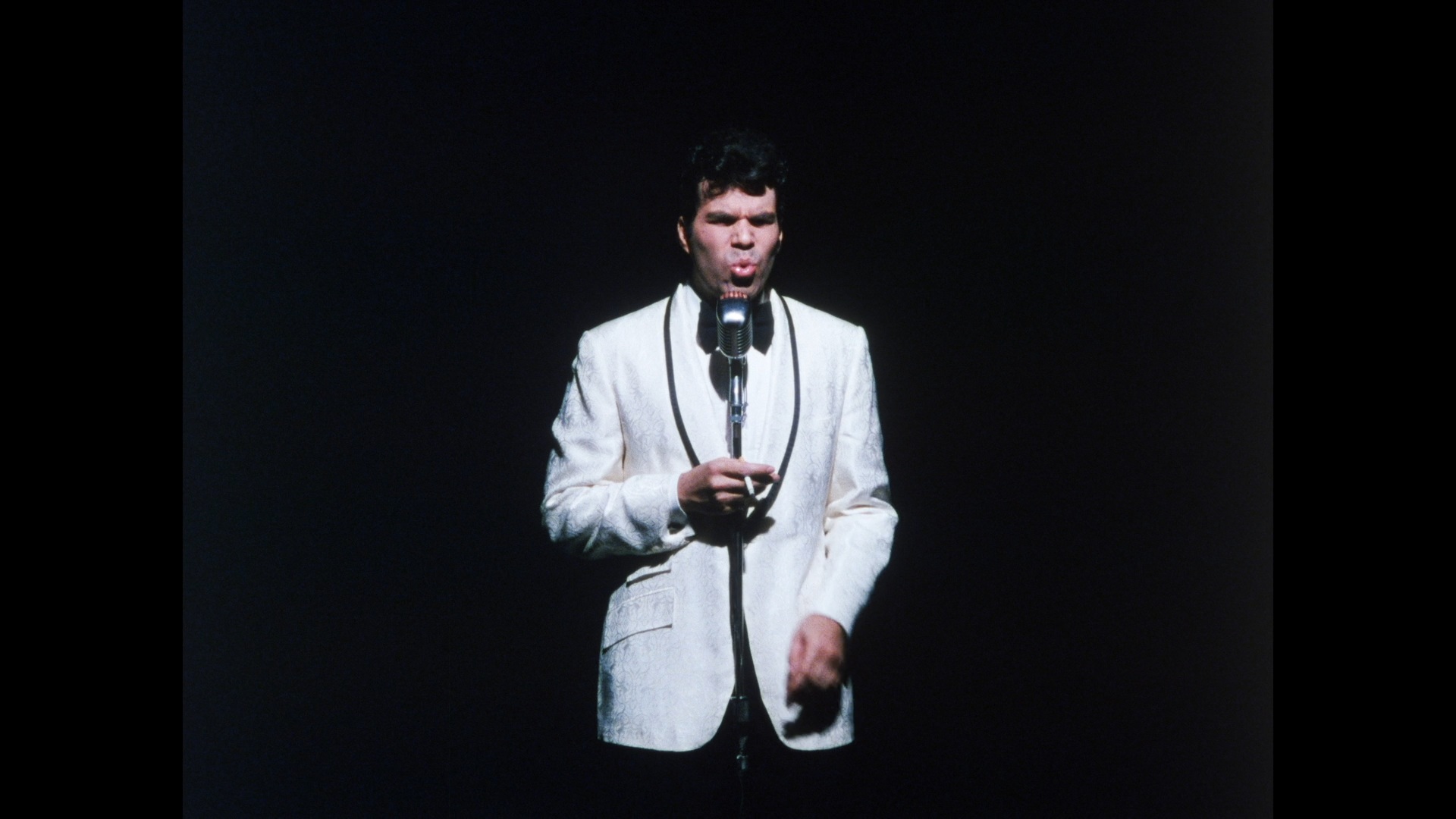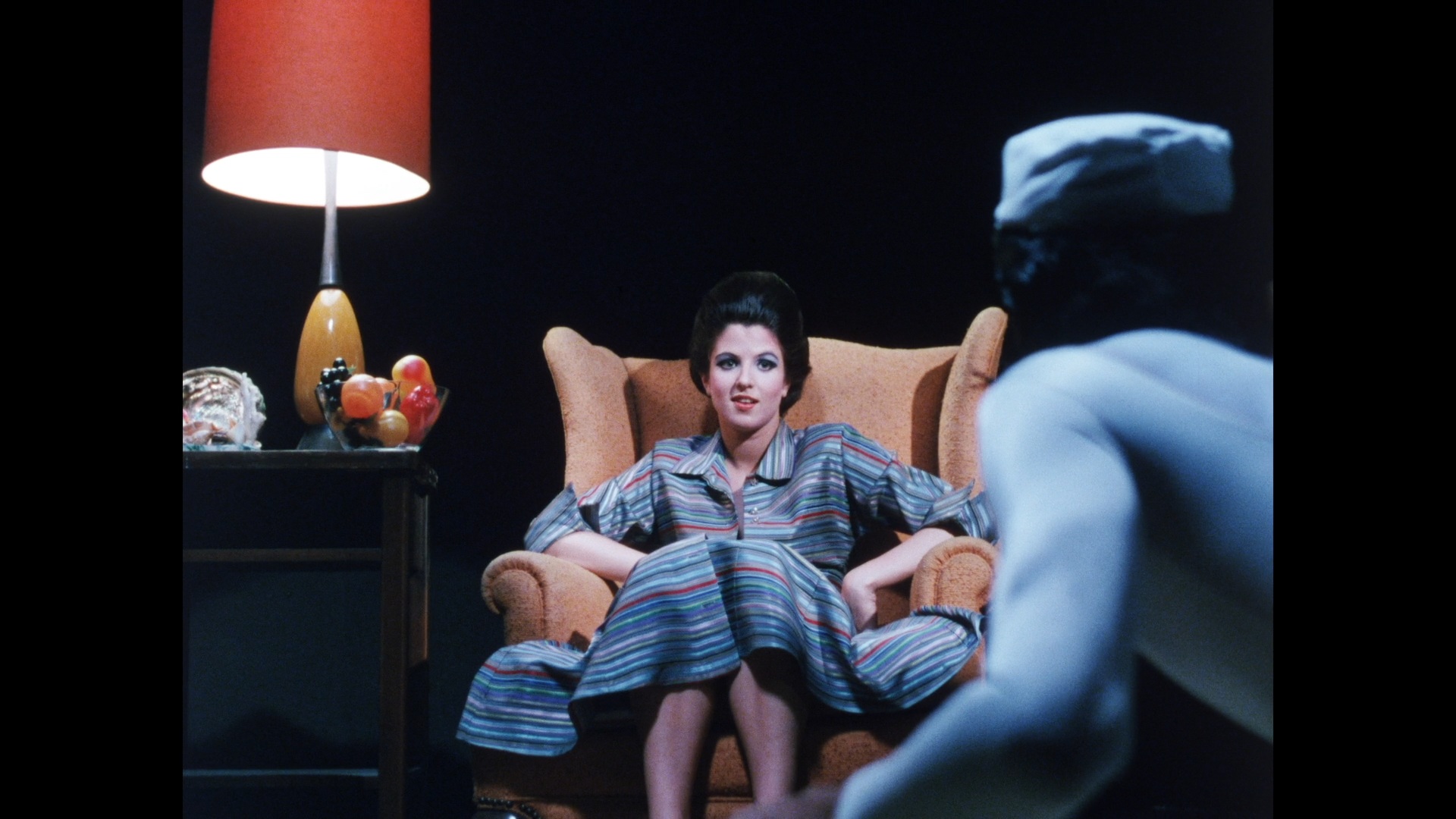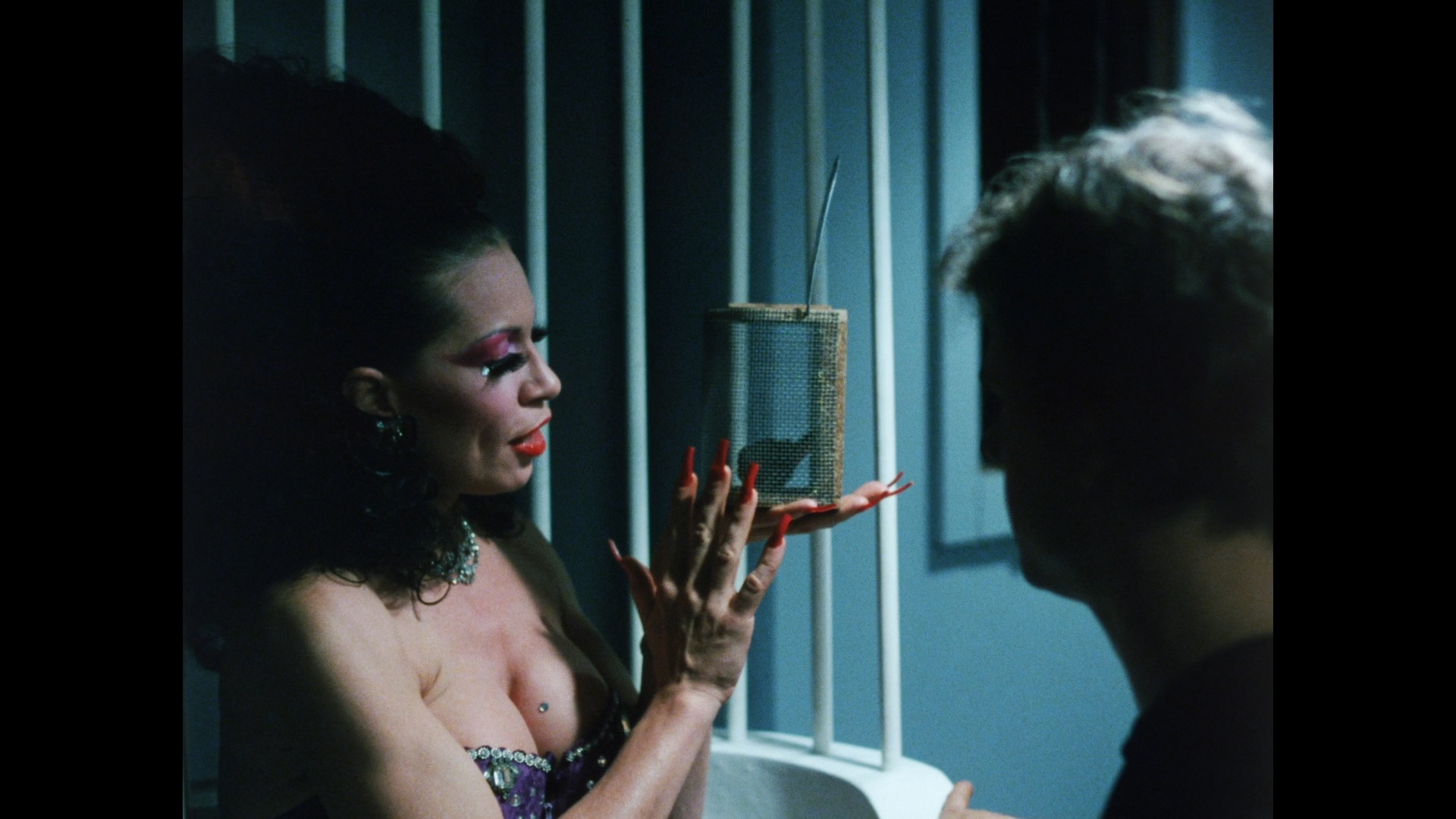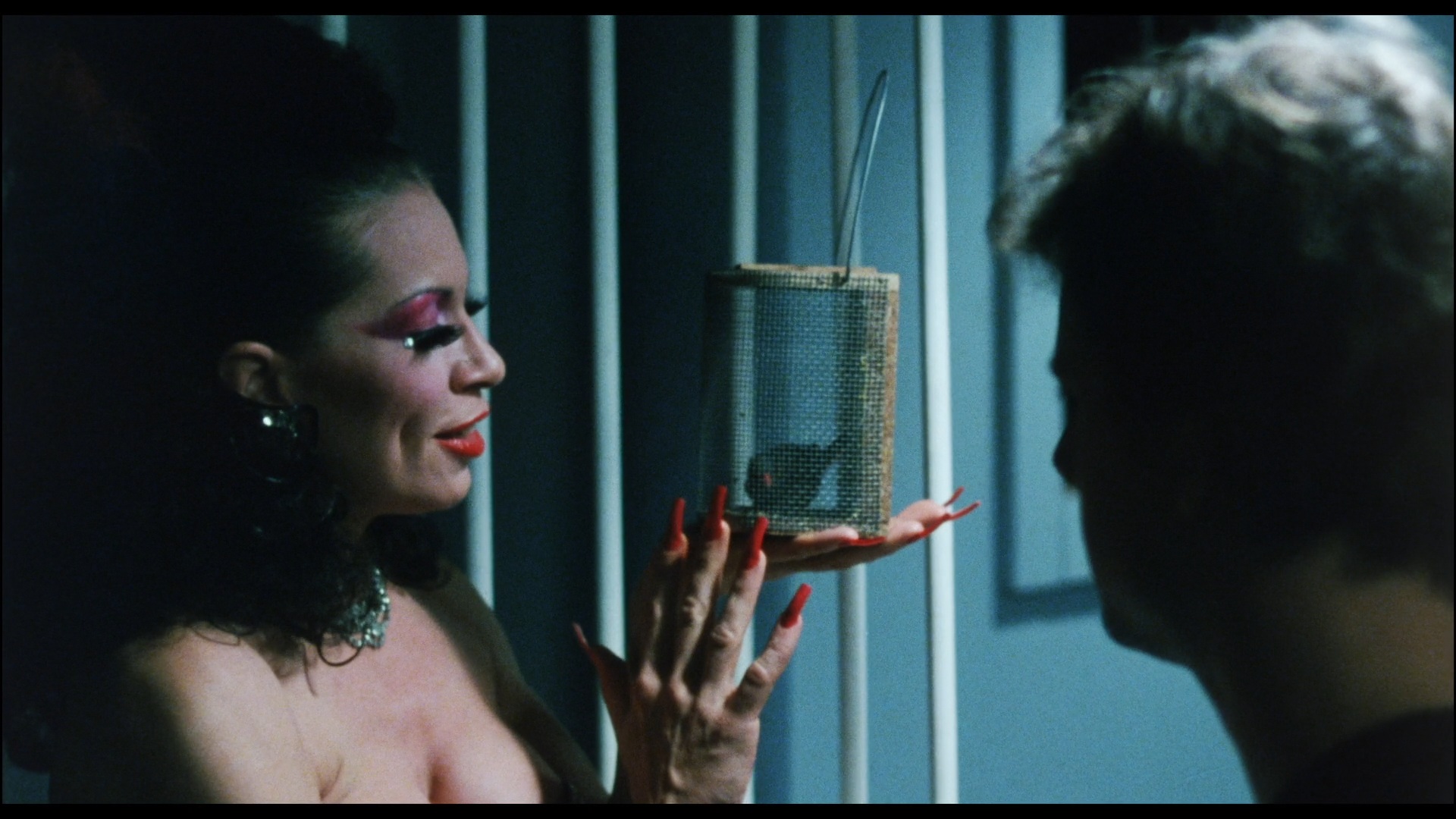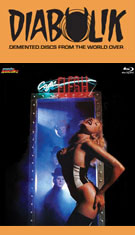
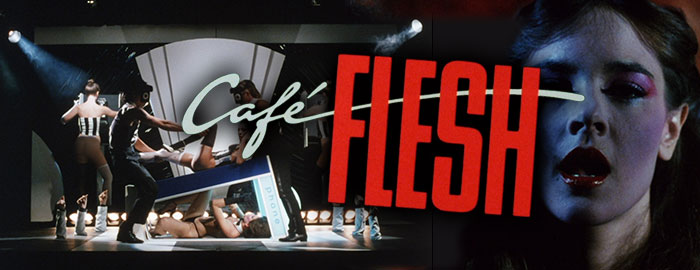
Color, 1982, 74 mins. / 73 mins. 28 secs.
Directed by Rinse Dream (Stephen Sayadian)
Starring Andy Nichols, Pia Snow (Michelle Bauer), Paul McGibboney, Marie Sharp, Darcy Nychols, Kevin James
Mondo Macabro (UHD & Blu-ray) (US R0 4K/HD), VCA (DVD) (US R1 NTSC)
The rare explicit adult film that gained a  substantial cult following as a legit midnight movie, Café Flesh arrived during the last gasp of mainstream
substantial cult following as a legit midnight movie, Café Flesh arrived during the last gasp of mainstream 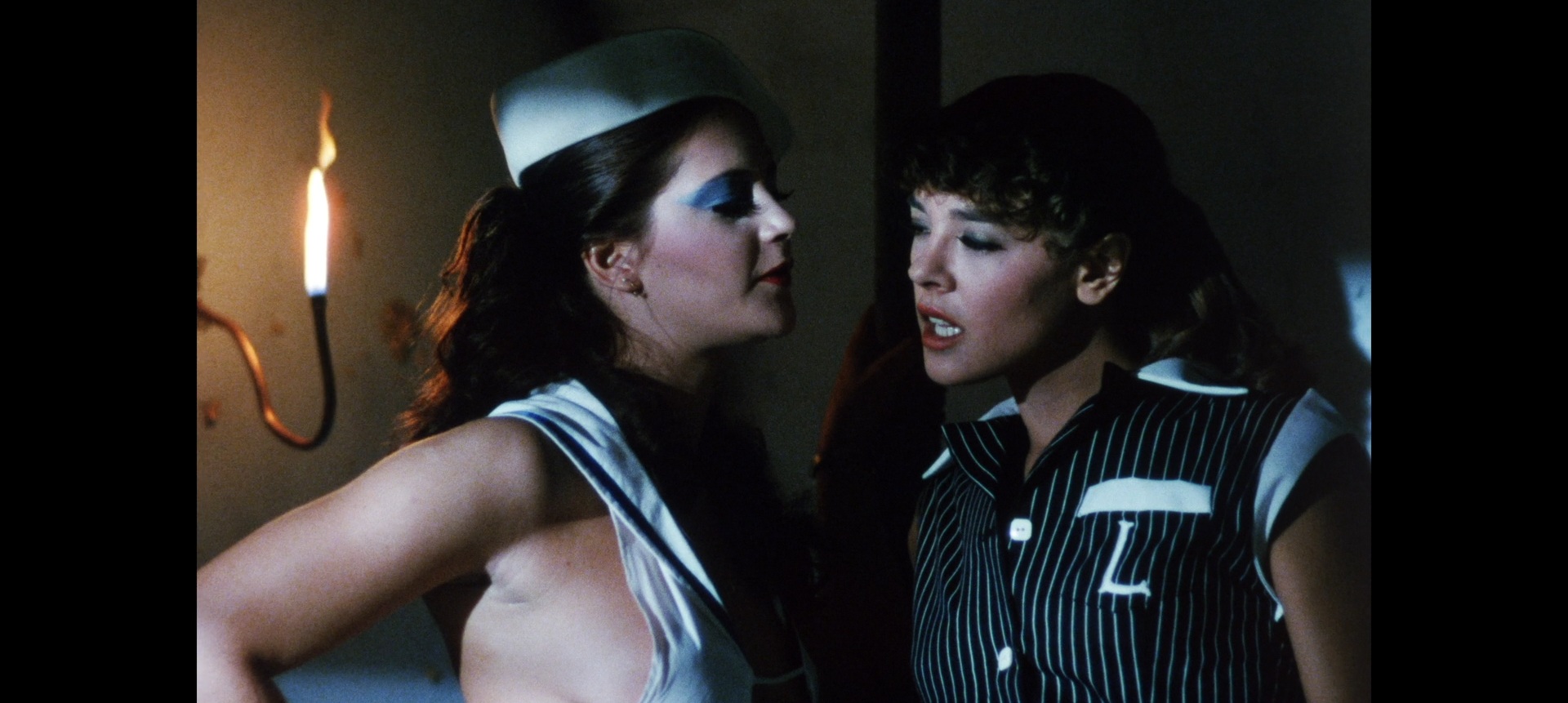 theatrical hardcore before shot-on-video productions killed the market in the mid-'80s. While some '70s films like The Opening of Misty Beethoven featured lavish production values, excellent writing, and genuine plots, Café Flesh pushed things even further by incorporating elements of surrealism, avant-garde art, pop culture, very dark humor, and science fiction. The result is truly one of a kind and a spellbinding experience that still hasn't been duplicated.
theatrical hardcore before shot-on-video productions killed the market in the mid-'80s. While some '70s films like The Opening of Misty Beethoven featured lavish production values, excellent writing, and genuine plots, Café Flesh pushed things even further by incorporating elements of surrealism, avant-garde art, pop culture, very dark humor, and science fiction. The result is truly one of a kind and a spellbinding experience that still hasn't been duplicated.
In a post-nuclear future, the majority of the world's population has been afflicted with an inability to function sexually. Called "Negatives," these morose survivors flock to clubs where they watch the few "Positives" perform sex shows onstage. At Café Flesh, the same crowd goes every night to receive the verbal lacerations of emcee Max Melodramatic (Nichols) while the club's owner, Moms (Nychols, a.k.a. Tantala Ray), keeps a tight rein backstage. Two of the regulars, married couple Lana (Pia Snow, a.k.a scream queen Michelle Bauer) and Nick (McGibboney), ponder why they subject themselves to this madness; however, Lana has a secret. She's actually a Positive but doesn't want to hurt Nick's feelings, so she pretends to be sickened by sexual arousal. Furthermore, as a  Positive she would have to leave him and join the circuit as a sex performer, a fate which befalls the innocent,
Positive she would have to leave him and join the circuit as a sex performer, a fate which befalls the innocent, 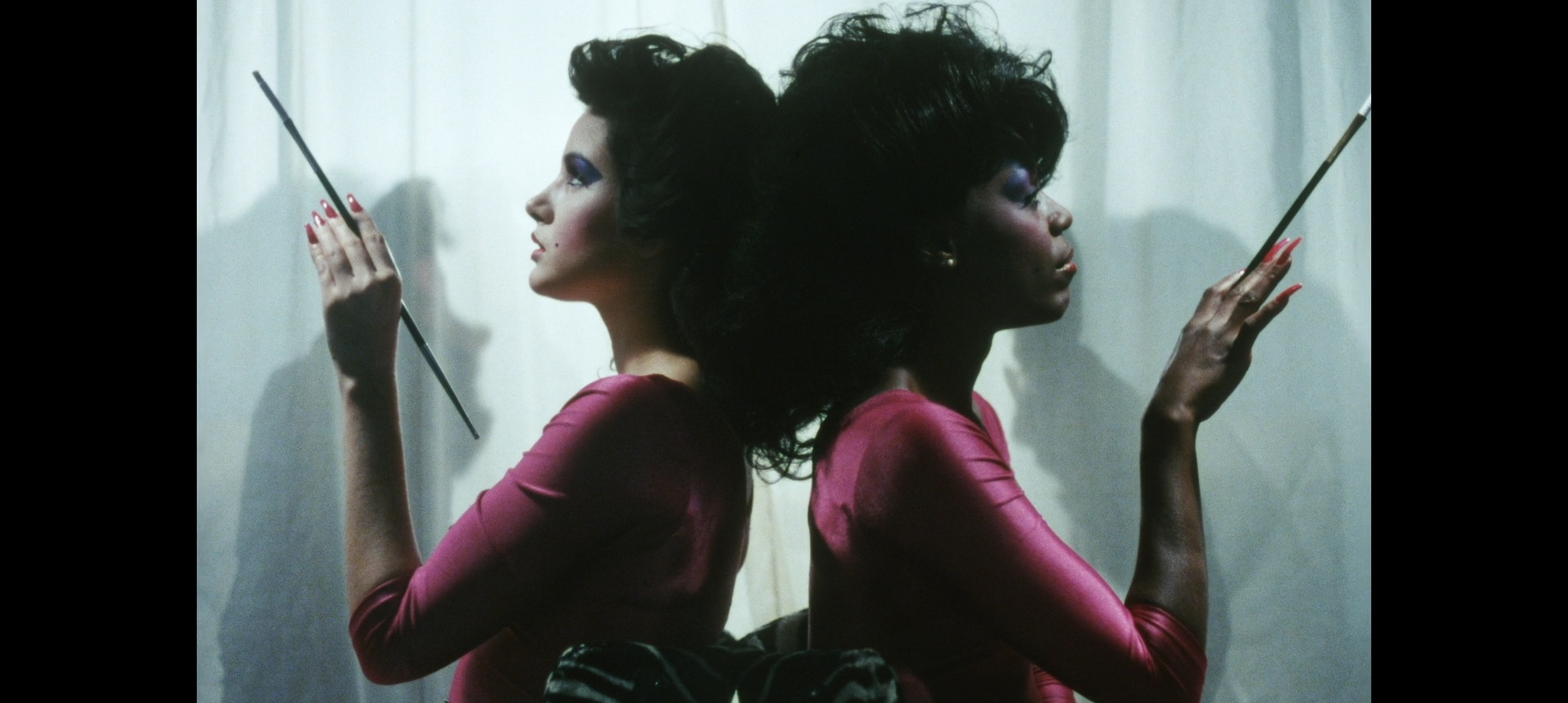 virginal Angel (Sharp). How long can Lana possibly hold out until his secret is discovered?
virginal Angel (Sharp). How long can Lana possibly hold out until his secret is discovered?
A bleak, visually striking vision that operates like a neon-lit art film take on A Boy and His Dog, this compelling oddity features much better acting and technical credits than audiences could have possibly expected. Those who remain clothed contribute the best performances, with Andy Nichols getting the finest moments in his stylized monologues. He had previously appeared in the excellent Nightdreams, also by "Rinse Dream" (actually Stephen Sayadian, director of the bizarre Dr. Caligari) and his ad agency partner Francis Delia, future Abel Ferrara cinematographer. Satirical writer Jerry Stahl (Permanent Midnight) co-wrote the incisive, tight screenplay with Sayadian, with sharp dialogue that sometimes seems a bit beyond the grasp of the performers. It's fascinating seeing the very young Bauer here before she became a genre staple; she famously used a body double for some (but not all) of the grand finale, making this her most envelope-pushing film along with Bad Girls. The outstanding electronic score by Mitchell Froom is so good it was later released in its entirety as a pop album, The Key of Cool (plus a 2022 reissue under the film's title) and is well worth seeking out.
A popular video title since its initial release from VCA, Café Flesh became a high-selling title on laserdisc and was an obvious choice for DVD. The 1999 release from VCA looked okay but was interlaced, presented open matte at 1.33:1. Since this was the height of industry paranoia about mixing 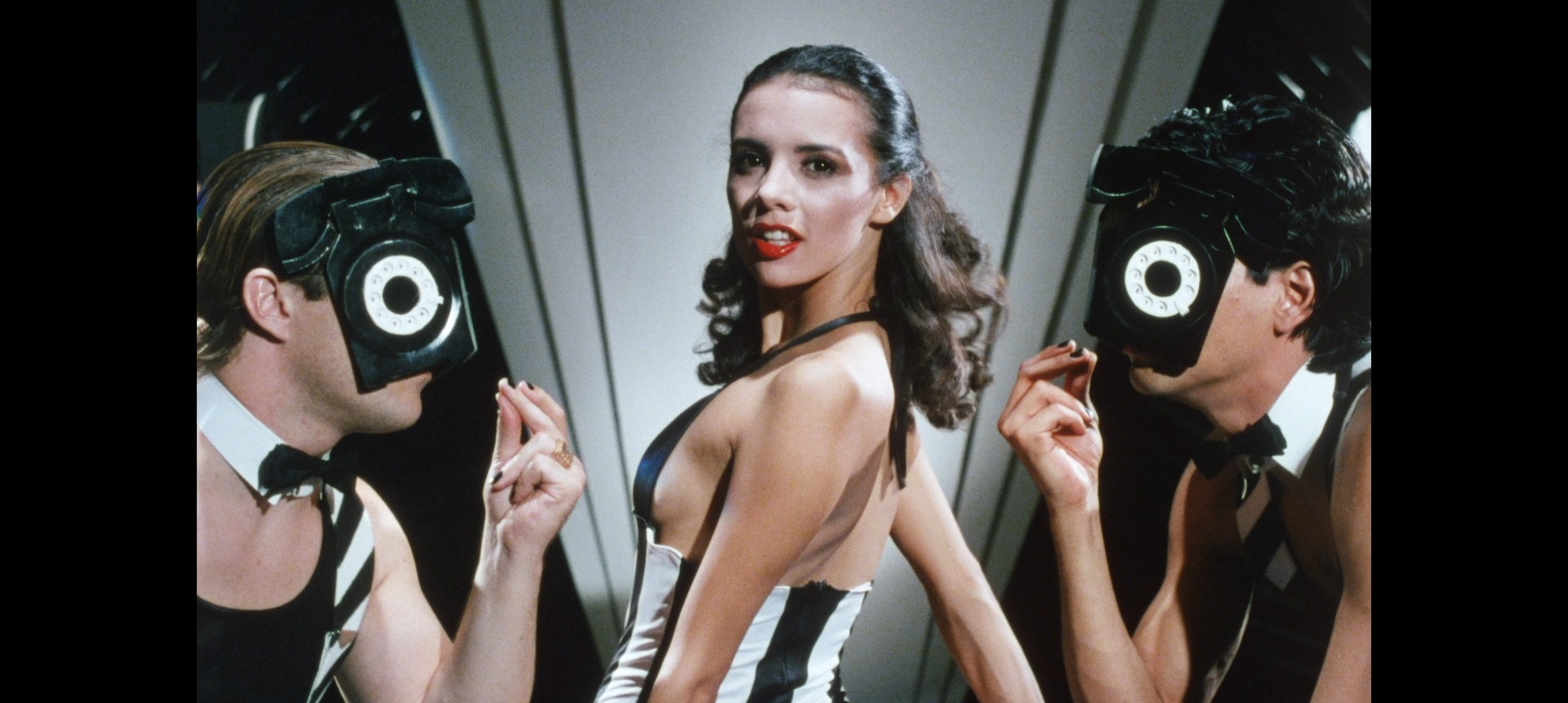 violent content with adult material, this was another ludicrous casualty with over a minute lost from the finale showing a major
violent content with adult material, this was another ludicrous casualty with over a minute lost from the finale showing a major  character being throttled and then kicked on the ground. It's far less graphic than anything you'd see on network TV at the time, which makes the censorship even weirder. Despite the claims of stereo sound on the back sleeve, the film is mono as always though the opening narration has been adjusted to flow in sync with the written crawl on the screen. The extras on the disc don't amount to much, mostly a photo gallery and the usual VCA weblinks and title listings.
character being throttled and then kicked on the ground. It's far less graphic than anything you'd see on network TV at the time, which makes the censorship even weirder. Despite the claims of stereo sound on the back sleeve, the film is mono as always though the opening narration has been adjusted to flow in sync with the written crawl on the screen. The extras on the disc don't amount to much, mostly a photo gallery and the usual VCA weblinks and title listings.
After a very long hiatus, the film finally got the edition it deserved in 2025 from Mondo Macabro on the heels of the label's excellent Dr. Caligari. Initially it was sold as a UHD and Blu-ray limited combo directly via their site, then with a standalone Blu-ray for regular retail sale and an eventual separate UHD standard edition. The very difficult restoration was achieved using the only extant 35mm material in existence, a print held at the UCLA Film & Television Archive as the primary source with missing segments (the "climaxes" and a lengthy bit during the finale) from another held by the Kinsey Institute. The transfer is obviously light years better than what we've had before; you'd never notice the composite work here apart from some slight framing shifts in the middle of a few shots. A smidgen of it also looks to be plugged in from an analog SD source, but it's quick and not distracting. The film is completely uncut at 75 minutes and offered  in either 1.33:1 or 1.85:1 aspect ratios; Delia framed it to be safe either way but the effect is quite different between them. The former option that most of us are used to feels more theatrical with spotlights and stage framing visible during much of the running time, while the 1.85:1 is more oppressive and claustrophobic. Try 'em both. The DTS-HD MA English 2.0 audio sounds fine given the source, with optional English SDH subtitles provided. Sayadian provides another excellent audio commentary here as well as a video interview (57m47s) in
in either 1.33:1 or 1.85:1 aspect ratios; Delia framed it to be safe either way but the effect is quite different between them. The former option that most of us are used to feels more theatrical with spotlights and stage framing visible during much of the running time, while the 1.85:1 is more oppressive and claustrophobic. Try 'em both. The DTS-HD MA English 2.0 audio sounds fine given the source, with optional English SDH subtitles provided. Sayadian provides another excellent audio commentary here as well as a video interview (57m47s) in  which he covers all the major participants, the strong influence of Cabaret and the rise of AIDS, the collaborative process with Stahl, their views about pornography and sex, the "retro-futuristic" approach to the props and costumes, attempts to pitch the film as an R-rated release to New Line and even spin it off into a TV series, the extent of Bauer's participation in the ending, the creators' backgrounds at Hustler, and lots more. He also goes into two ideas he had for the ending involving Nick's fate that got vetoed by the powers that be, and one of them is so grotesque it would have had audiences flying out of the theater. Then Stahl appears for an interview (15m22s) reiterating the idea of making an anti-porn film, his initial meeting and work with Sayadian, the influence of writer Bruce J. Friedman, his approach to using narcotics, and his general creative process. Also included are analytical interviews with adult actress and writer Stoya (9m39s) and writer Jacob Smith (17m49s) about the film's innovative achievements in the adult film realm, the commentary on explicit media, its continued status as a pop culture outlier, the relationship between spectator and performer, Smith's arduous efforts to track down Sayadian, the film's unique use of sound and music, the concept of sex as theatrical performance, the effect of all the mask imagery, and more. Also included are the original theatrical trailer and a pretty amazing VHS-shot 3m8s reel of production footage shot by a Twin Cities news crew including an interview with Sayadian.
which he covers all the major participants, the strong influence of Cabaret and the rise of AIDS, the collaborative process with Stahl, their views about pornography and sex, the "retro-futuristic" approach to the props and costumes, attempts to pitch the film as an R-rated release to New Line and even spin it off into a TV series, the extent of Bauer's participation in the ending, the creators' backgrounds at Hustler, and lots more. He also goes into two ideas he had for the ending involving Nick's fate that got vetoed by the powers that be, and one of them is so grotesque it would have had audiences flying out of the theater. Then Stahl appears for an interview (15m22s) reiterating the idea of making an anti-porn film, his initial meeting and work with Sayadian, the influence of writer Bruce J. Friedman, his approach to using narcotics, and his general creative process. Also included are analytical interviews with adult actress and writer Stoya (9m39s) and writer Jacob Smith (17m49s) about the film's innovative achievements in the adult film realm, the commentary on explicit media, its continued status as a pop culture outlier, the relationship between spectator and performer, Smith's arduous efforts to track down Sayadian, the film's unique use of sound and music, the concept of sex as theatrical performance, the effect of all the mask imagery, and more. Also included are the original theatrical trailer and a pretty amazing VHS-shot 3m8s reel of production footage shot by a Twin Cities news crew including an interview with Sayadian.
Mondo Macabro (Blu-ray) (1.33:1)
Mondo Macabro (Blu-ray) (1.85:1)
VCA (DVD)
Updated review on June 18, 2025
![]()
